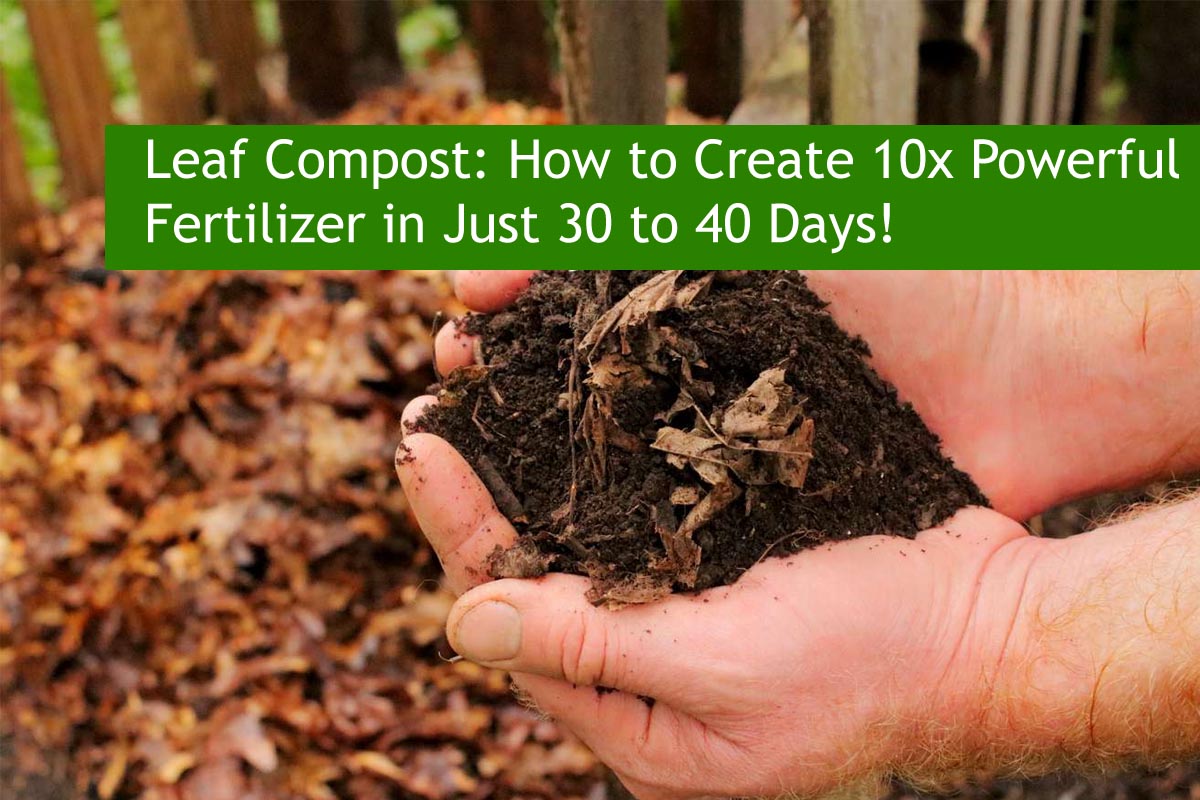
Leaf Compost: How to Create 10x Powerful Fertilizer in Just 30 to 40 Days!
In our gardens, countless trees and plants shed dry leaves, which are often either burned or discarded as waste. However, these dry leaves are rich in essential elements like magnesium, potassium, calcium, nitrogen, and phosphorus. Instead of considering them useless, we can utilize these leaves to prepare excellent fertilizer for our plants. By composting these leaves, we can provide our plants with a nutrient-rich diet that accelerates their growth significantly.
Many people already make fertilizer from these leaves and nourish their plants with it. If you’ve been making the mistake of discarding dry leaves, read this article to avoid it in the future. After reading this article, In this guide, we’ll explore the benefits of leaf composting and walk you through the simple steps to create your own 10x powerful fertilizer in just 30 to 40 days.
The Benefits of Leaf Compost:
Nutrient-Rich Soil Amendment:
Leaf compost is packed with essential nutrients like nitrogen, phosphorus, and potassium, which are vital for plant growth.
Improves Soil Structure:
Composting leaves helps improve soil structure, making it more aerated and better able to retain moisture.
Reduces Waste:
Instead of disposing of fallen leaves, composting them allows you to repurpose organic matter and reduce waste.
Environmentally Friendly:
Composting leaves is an eco-friendly way to enrich your soil without relying on synthetic fertilizers, which can be harmful to the environment.
Cost-Effective:
Making your own leaf compost is a cost-effective alternative to purchasing commercial fertilizers, saving you money in the long run.
Also Read This : Magic of Epsom Salt: A Powerful Tool for Gardening
How to Create 10x Powerful Fertilizer in Just 30 to 40 Days:

Gather Your Leaves:
Collect fallen leaves from your yard or neighborhood. Choose a variety of leaves for a diverse mix of nutrients.
Shred or Chop the Leaves:
Shredding or chopping the leaves into smaller pieces will speed up the composting process by increasing surface area and promoting microbial activity.
Build Your Compost Pile:
Layer the shredded leaves in a compost bin or designated composting area. Alternate layers of leaves with layers of nitrogen-rich materials like grass clippings, kitchen scraps, or manure.
Water and Turn:
Keep your compost pile moist but not waterlogged. Use a garden hose to lightly moisten the layers as you build the pile. Periodically turn the compost pile with a pitchfork or compost turner to aerate it and promote decomposition.
Also Read This : How Two Lids of Solution Can Transform Your Garden into a Sea of Red and Pink Roses
Monitor Temperature and Moisture:
Check the temperature and moisture levels of your compost pile regularly. The ideal temperature for composting is between 120°F and 160°F. If the pile becomes too dry, water it. If it becomes too wet, add more dry leaves or straw to balance the moisture levels.
Wait Patiently:
Depending on environmental conditions and the size of your compost pile, leaf compost can be ready in as little as 30 to 40 days. Continue to monitor and turn the pile as needed until the compost is dark, crumbly, and earthy-smelling.
Use Your Compost:
Once your leaf compost is fully decomposed, it’s ready to use in your garden. Spread a layer of compost around your plants or mix it into the soil to improve fertility and promote healthy growth.
Also Read This : Understanding Plant Transfer Shock: Causes and Prevention Strategies
Tips for Success:
- Chop or shred your leaves into small pieces to speed up the composting process.
- Balance the carbon-to-nitrogen ratio in your compost pile by adding a mix of leaves and nitrogen-rich materials.
- Keep your compost pile moist and aerated to encourage microbial activity and decomposition.
- Experiment with different types of leaves and organic materials to create a diverse and nutrient-rich compost blend.
- Be patient and allow time for your compost to fully decompose before using it in your garden.
Also Read This : 6 Shade-Loving Indoor Plants to Brighten Your Space
Leaf composting is a simple and effective way to create nutrient-rich fertilizer for your garden. By following these steps and tips, you can harness the power of decomposition to transform fallen leaves into a 10x powerful fertilizer in just 30 to 40 days. Not only will you reduce waste and save money, but you’ll also promote healthy plant growth and cultivate a more vibrant and thriving garden ecosystem. So grab your rake and get composting – your plants will thank you!




